Pedro Javier González – Guitar
Jewels for flamenco guitar
A selection of masterpieces that review, from the modern musicality, the origins of flamenco concert and its influence on Spanish music (R. Montoya, Sabicas, Manuel de Falla, Lorca, Lecuona …)
DÚO
Pedro Javier González – Guitar
Horacio Fumero – Double bass
Flamenco / Jazz / Traditional
The two artists who make up this duet have had individual experiences that have been clearly marked by the instruments they play: a Spanish guitar is rarely far from the music of flamenco, and the double bass is an instrument that owes a large part of its development to jazz. If we add to this the fact that we are talking about two musicians of Iberian and Latin American heritage, born on opposite shores of the Atlantic Ocean, we quickly see the outline of their musical discourse take shape.
TRÍO
Pedro Javier González – Guitarra
Guillem Aguilar- Bajo
David Dominguez- Percusión
Flamenco / Fusion
Pedro Javier González vuelve a poner en pie una de sus formaciones instrumentales estrella: el TRÍO.
En esta ocasión junto a Guillem Aguilar al bajo y David Dominguez a la percusión nos presentará el estreno de una colección de exquisitos temas originales, adaptaciones y revisiones desde el corazón de su guitarra flamenca.
SEPTET
Pedro Javier González – Guitar
Horacio Fumero – Double bass
Domingo Patricio – Flute
Pepe Camacho – Guitar
Xavi García – Percussion
José Manuel Álvarez – Dance
Carol Morgado – Dance
Flamenco and More
Septeto is the show that gathers the excellence of the previous performances. In this act the flamenco concert guitar becomes versatile, shining with its maximum splendor. Between the swing of Flamenco and Jazz, there is a flirt with classical Spanish music and even with international pop rock. The third dimension of rhythm and visual expands when the stage is filled with the talent and youth of dancers José Manuel Álvarez and Carol Morgado.
CONCIERTO
DE ARANJUEZ
Pedro Javier González joins the long list of illustrious musicians who have interpreted this musical masterpiece by Joaquín Rodrigo over the years, turning it into the most well-known piece of Spanish music in the world.
It is divided into three movements: it begins as an allegro con spirito grounded in folk tradition and dance mood; then goes on to the famous adagio dialogue between the guitar and the orchestra, and finally ends with an allegro gentile that evokes courtly dancing.
- Играть в игровые автоматы онлайн казино Slot V
- Игровые автоматы онлайн казино Casino X на реальные деньги
- Казино Дрифт официальный сайт
- Лучшие игровые автоматы казино obzory-kazino.com.ua на реальные деньги
- Лучшие игровые автоматы казино Пин Ап на деньги
- Онлайн казино Буй официальный сайт
- Регистрация и актуальное зеркало сайта казино Казино Фреш
- Регистрация на сайте и программа лояльности казино Чемпион

